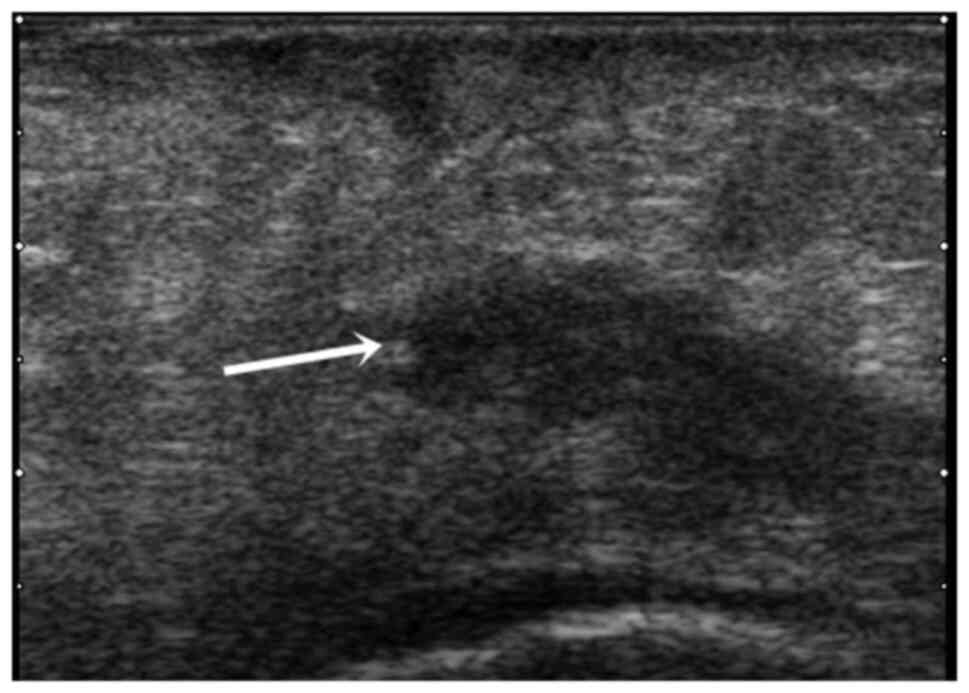|
1
|
Köckerling F and Simons MP: Current
concepts of inguinal hernia repair. Visc Med. 34:145–150.
2018.PubMed/NCBI View Article : Google Scholar
|
|
2
|
White JJ and Haller JA: Groin Hernia in
Infants and Children. Nyhus LM and Condon RE (eds). Hernia
Philadelphia, PA, Lippincott, pp101-136, 1978.
|
|
3
|
Rutkow MI: A selective history of groin
hernia surgery in the early 19th century: The Anatomic Atlases of
Astley Cooper, Franz Hesselbach, Antonio Scarpa, and Jules-Germain
Cloquet. Surg Clin North Am. 78:921–940. 1998.PubMed/NCBI View Article : Google Scholar
|
|
4
|
Dørflinger T and Kiil J: Absorbable suture
in hernia repair. Acta Chir Scand. 150:41–43. 1984.PubMed/NCBI
|
|
5
|
Summers JE: Classical herniorrhaphies of
Bassini, Halsted and Ferguson. Am J Surg. 73:87–99. 1947.PubMed/NCBI View Article : Google Scholar
|
|
6
|
Stoppa R, Petit J, Abourachid H, Henry X,
Duclaye C, Monchaux G and Hillebrant JP: Original procedure of
groin hernia repair: Interposition without fixation of Dacron tulle
prosthesis by subperitoneal median approach. Chirurgie. 99:119–123.
1973.PubMed/NCBI(In French).
|
|
7
|
Tanasescu C, Faur M and Sabau D: Day-case
surgery in the context of inguinal hernia repair by the modified
Lichtenstein technique-A single Centre experience. Chirurgia
(Bucur). 114:115–120. 2019.PubMed/NCBI View Article : Google Scholar
|
|
8
|
Hernia Surge Group. International
guidelines for groin hernia management. Hernia. 22:1–165.
2018.PubMed/NCBI View Article : Google Scholar
|
|
9
|
Brown CN and Finch JG: Which mesh for
hernia repair? Ann R Coll Surg Engl. 92:272–278. 2010.PubMed/NCBI View Article : Google Scholar
|
|
10
|
Bratu D, Boicean A, Tanasescu C, Sofariu
C, Mihetiu A, Mitariu Cernusca IS, Ognean L, Moldovan C and Boitor
C: Textile polypropylene allografts and their postoperative tissue
reaction in the surgery of inguinal hernia. Mater Plast.
54:119–121. 2017.
|
|
11
|
Cobb WS, Burns JM, Peindl RD, Carbonell
AM, Matthews BD, Kercher KW and Heniford BT: Textile analysis of
heavy weight, mid-weight, and light weight polypropylene mesh in a
porcine ventral hernia model. J Surg Res. 136:1–7. 2006.PubMed/NCBI View Article : Google Scholar
|
|
12
|
Bolocan A, Ion D, Constantinescu S, Luca
AD and Paduraru DN: Randomised trial comparing poly-propylene mesh
and polyvinylidene fluoride mesh in the surgery. Mat Plast.
49:209–211. 2012.
|
|
13
|
Lichtenstein IL, Shulman AG, Amid PK and
Montllor MM: The tension-free hernioplasty. Am J Surg. 157:188–193.
1989.PubMed/NCBI View Article : Google Scholar
|
|
14
|
Wotton FT and Akoh JA: Rejection of
Permacol mesh used in abdominal wall repair: A case report. World J
Gastroenterol. 15:4331–433. 2009.PubMed/NCBI View Article : Google Scholar
|
|
15
|
Kehlet H and Bay Nielsen M: Anaesthetic
practice for groin hernia repair-a nation-wide study in Denmark
1998-2003. Acta Anaesthesiol Scand. 49:143–146. 2005.PubMed/NCBI View Article : Google Scholar
|
|
16
|
Fitzgibbons RJ Jr, Giobbie-Hurder A, Gibbs
JO, Dunlop DD, Reda DJ, McCarthy M Jr, Neumayer LA, Barkun JST,
Hoehn JL, Murphy JT, et al: Watchful waiting vs. re-pair of
inguinal hernia in minimally symptomatic men: A randomised clinical
trial. JAMA. 295:285–292. 2006.PubMed/NCBI View Article : Google Scholar
|
|
17
|
Chicea R, Chicea AL, Mihetiu A, Tantar C,
Cernusca Mitaru MM, Cernusca Mitaru SI, Roman C, Comaneanu RM,
Bratu D and Manea MM: Comparative study between tissues induced
immunohistochemical changes of thread granulomas and textile
allografts. Mater Plast. 55:99–101. 2018.
|
|
18
|
Weyhe D, Cobb W, Lecuivre J, Alves A,
Ladet S, Lomanto D and Bayon Y: Large pore size and controlled mesh
elongation are relevant predictors for mesh integration quality and
low shrinkage-Systematic analysis of key parameters of meshes in a
novel minipig hernia model. Int J Surg. 22:46–53. 2015.PubMed/NCBI View Article : Google Scholar
|
|
19
|
Klosterhalfen B, Junge K and Klinge U: The
lightweight and large porous mesh concept for hernia repair. Expert
Rev Med Devices. 2:103–117. 2005.PubMed/NCBI View Article : Google Scholar
|
|
20
|
Wolak PK, Strzelecka A, Piotrowska A,
Dąbrowska K, Wolak PP, Piotrowska I and Nowak-Starz G: The
operative time for unilateral inguinal hernia repair in children
performed with Percutaneous Internal Ring Suturing (PIRS) or open
approach method. J Clin Med. 10(1293)2021.PubMed/NCBI View Article : Google Scholar
|
|
21
|
Sanbhal N, Miao L, Xu R, Khatri A and Wang
L: Physical structure and mechanical properties of knitted hernia
mesh materials: A review. J Industrial Textiles. 48:333–360.
2018.
|
|
22
|
Fang H, Lin R, Lin X, Lu F, Yang Y, Wang
C, Chen Y and Huang H: Drainage decreases the seroma incidence in
laparoscopic transabdominal preperitoneal (TAPP) hernia repair for
large inguinoscrotal hernias. Asian J Surg. 44:544–548.
2021.PubMed/NCBI View Article : Google Scholar
|
|
23
|
Köckerling F, Bittner R, Adolf D, Fortelny
R, Niebuhr H, Mayer F and Schug-Pass C: Seroma following
transabdominal preperitoneal patch plasty (TAPP): Incidence, risk
factors, and preventive measures. Surg Endosc. 32:2222–2231.
2018.PubMed/NCBI View Article : Google Scholar
|
|
24
|
Smoot RL, Oderich GS, Taner CB, Greenlee
SM, Larson DR, Cragun EB and Farley DR: Postoperative hematoma
following inguinal herniorrhaphy: Patient characteristics leading
to increased risk. Hernia. 12:261–265. 2008.PubMed/NCBI View Article : Google Scholar
|
|
25
|
Georgescu EF, Mogoantă SŞ, Costache A,
Pârvănescu V, Totolici BD, Pătraşcu Ş and Stănescu C: The
assessment of matrix metalloproteinase-9 expression and
angiogenesis in colorectal cancer. Rom J Morphol Embryol.
56:1137–1144. 2015.PubMed/NCBI
|
|
26
|
Rusu E, Jinga M, Rusu F, Ciurtin C, Enache
G, Dragomir A, Cristescu V, Stoica V, Costache A, Cheta D and
Radulian G: Statin therapy in patients with diabetes and hepatitis
C. Farmacia. 61:1204–1215. 2013.
|
|
27
|
Berghi NO, Dumitru M, Vrinceanu D,
Ciuluvica RC, Simioniuc-Petrescu A, Caragheorgheopol R, Tucureanu
C, Cornateanu RS and Giurcaneanu C: Relationship between chemokines
and T lymphocytes in the context of respiratory allergies (Review).
Exp Ther Med. 20:2352–2360. 2020.PubMed/NCBI View Article : Google Scholar
|

















